I have this database schema:
drop table if exists demo_contact cascade;
create table demo_contact (id serial primary key);
insert into demo_contact values (1);
insert into demo_contact values (2);
insert into demo_contact values (3);
drop table if exists demo_contact_custom_field cascade;
create table demo_contact_custom_field (custom_field_id text, contact_id numeric, value text);
insert into demo_contact_custom_field values ('7759512f-662f-4139-94fb-8b708c5d11eb', 1, '3232');
insert into demo_contact_custom_field values ('a96993bf-eb38-446c-a5a7-416485e8b933', 1, 'true');
insert into demo_contact_custom_field values ('a96993bf-eb38-446c-a5a7-416485e8b933', 2, 'true');
How can I produce this sort of output?
| contact_id | 7759512f-662f-4139-94fb-8b708c5d11eb | a96993bf-eb38-446c-a5a7-416485e8b933 |
|---|---|---|
| 1 | 3232 | true |
| 2 | true |
I searched around for various queries relating to transposing a table, pivot tables in Postgres, this literal question title "turn postgres join rows into columns" but I haven't found a solution:
- https://dba.stackexchange.com/questions/246508/sql-join-to-put-rows-into-columns This seems to have an incorrect answer
- Concatenate multiple result rows of one column into one, group by another column This is the second Google hit but not what I need (I don't need an array column, I need a column for each joined table row)
- https://dirask.com/posts/PostgreSQL-concatenate-multiple-rows-into-one-field-DLok61 Again not what I need, I don't want to join multiple values into a single cell
- https://www.quora.com/How-do-you-combine-multiple-rows-into-multiple-columns-with-PostgreSQL-SQL-PostgreSQL-development Recommends looking up Postgres pivot table and crosstab but from the look I had on that, this seems to be related to aggregating values to cells?
